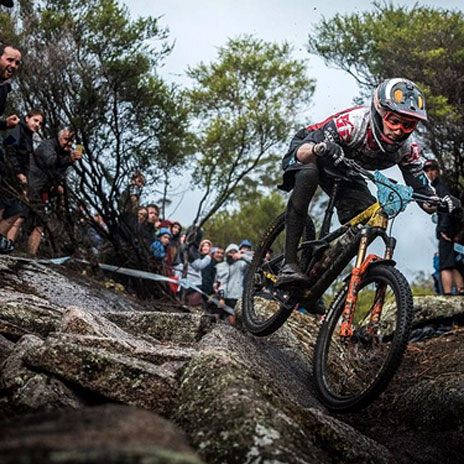
- Afrikaans
- Albanian
- Amharic
- Arabic
- Armenian
- Azerbaijani
- Basque
- Belarusian
- Bengali
- Bosnian
- Bulgarian
- Catalan
- Cebuano
- Corsican
- Croatian
- Czech
- Danish
- Dutch
- English
- Esperanto
- Estonian
- Finnish
- French
- Frisian
- Galician
- Georgian
- German
- Greek
- Gujarati
- Haitian Creole
- hausa
- hawaiian
- Hebrew
- Hindi
- Miao
- Hungarian
- Icelandic
- igbo
- Indonesian
- irish
- Italian
- Japanese
- Javanese
- Kannada
- kazakh
- Khmer
- Rwandese
- Korean
- Kurdish
- Kyrgyz
- Lao
- Latin
- Latvian
- Lithuanian
- Luxembourgish
- Macedonian
- Malgashi
- Malay
- Malayalam
- Maltese
- Maori
- Marathi
- Mongolian
- Myanmar
- Nepali
- Norwegian
- Norwegian
- Occitan
- Pashto
- Persian
- Polish
- Portuguese
- Punjabi
- Romanian
- Russian
- Samoan
- Scottish Gaelic
- Serbian
- Sesotho
- Shona
- Sindhi
- Sinhala
- Slovak
- Slovenian
- Somali
- Spanish
- Sundanese
- Swahili
- Swedish
- Tagalog
- Tajik
- Tamil
- Tatar
- Telugu
- Thai
- Turkish
- Turkmen
- Ukrainian
- Urdu
- Uighur
- Uzbek
- Vietnamese
- Welsh
- Bantu
- Yiddish
- Yoruba
- Zulu
Dec . 04, 2024 09:29 Back to list
adjusting mountain bike derailleur
Adjusting Your Mountain Bike Derailleur A Comprehensive Guide
Mountain biking is a thrilling outdoor activity that offers adrenaline-packed rides through rocky terrains and rugged trails. However, a bike with an improperly adjusted derailleur can lead to frustrating rides, poor shifting performance, and even mechanical issues. To ensure smooth gear changes and optimal performance, it's essential to understand how to adjust your mountain bike derailleur effectively.
Understanding the Derailleur System
The derailleur is a critical component of your bike’s shifting system. It is responsible for moving the chain between different gears on the cassette and chainrings, allowing you to find the right gear for your terrain. Most modern mountain bikes come equipped with either a front and rear derailleur or, in some cases, just a rear derailleur for simplicity.
Tools Needed for Adjustment
To get started, you’ll need a few basic tools - A Phillips or flathead screwdriver. - An Allen wrench set. - Chain lubricant (for maintenance).
Initial Preparations
Before making any adjustments, ensure that your bike is in a stable position—preferably on a bike stand. Inspect the drivetrain for any visible damage, such as a bent derailleur hanger or a dirty chain. Clean and lubricate the chain to ensure smooth operation.
Step-by-Step Adjustment Process
adjusting mountain bike derailleur

1. Set the Limit Screws - The first step in adjusting the derailleur is to set the limit screws, which prevent the chain from going beyond the highest and lowest gears. - Shift your bike into the smallest chainring and the smallest rear cog. Locate the high limit screw (H) on the derailleur. It should be marked “H” or “Limit.” This screw controls how far the derailleur can pivot towards the front of the bike. Adjust it so that the chain can move smoothly onto the smallest rear cog without rubbing against the derailleur. - Repeat this process for the low limit screw (L) while shifting to the largest chainring and the largest cog. Adjust the screw so that the chain is aligned perfectly with the largest cog without overextending.
2. Adjust the Cable Tension - After setting the limit screws, it’s time to adjust the cable tension. If your shifts feel sluggish or the chain hesitates to move, the cable tension may be too loose. - Use the barrel adjuster located on the derailleur or the shifter. Turning it counterclockwise increases tension, while turning clockwise decreases it. Make small adjustments and test the shifting after each tweak. Aim for a responsive shifting feel with minimal delay.
3. Fine-Tuning the Derailleur Alignment - Verify that the derailleur is correctly aligned with the cogs. A misaligned derailleur can cause poor shifting and chain skip. - Inspect the derailleur’s angle; it should be parallel to the cogs for best performance. If it’s not, loosen the mounting bolt with an Allen wrench, adjust the angle, and retighten the bolt.
4. Test the Shifting - Once adjustments are made, it’s essential to test the shifting under load. Take your bike for a short ride and shift through all combinations of gears, paying attention to the shifting quality. - If you encounter any issues, such as ghost shifting (when the chain shifts without input from the rider), return to the derailleur and make further adjustments as necessary.
Regular Maintenance
After adjusting your derailleur, it’s important to maintain your bike regularly. Keep the chain clean and well-lubricated, check for any wear on the derailleur components, and periodically inspect the cable for fraying or damage. Regular maintenance will ensure that your shifting remains smooth over the long term, allowing you to enjoy your mountain biking adventures without interruption.
Conclusion
Adjusting your mountain bike derailleur can significantly enhance your riding experience by improving shifting performance and preventing mechanical issues. While it may seem daunting at first, following these steps will allow any rider, novice or experienced, to tackle derailleur adjustments confidently. With a little practice and care, your bike will be perfectly tuned for any trail adventure you venture out on. Happy riding!
-
The Ultimate Kids' Four-Wheeler Experience
NewsJul.09,2025
-
The Ultimate Guide to Mountain Bikes: Gear Up for Your Ride
NewsJul.09,2025
-
The New Age of Cycling: Electric Bikes for Every Rider
NewsJul.09,2025
-
The Best Kids Bicycles: Ride in Style and Safety
NewsJul.09,2025
-
The Best 3-Wheel Scooters for Kids: Fun, Safety, and Adventure
NewsJul.09,2025
-
Revolutionize Your Ride: Affordable Electric Bikes
NewsJul.09,2025
-
Finding the Perfect Mountain Bike for Every Rider
NewsJul.09,2025



